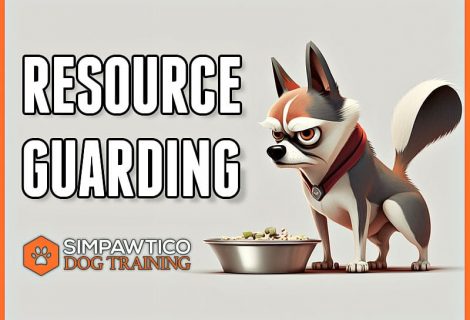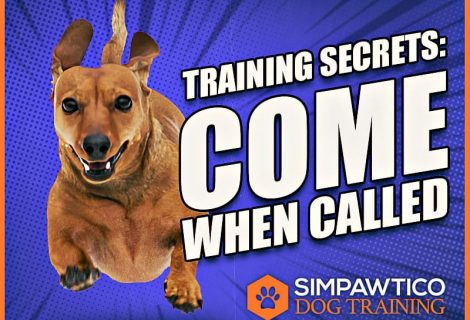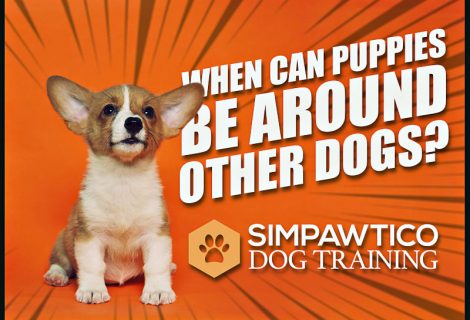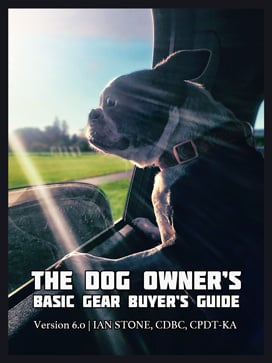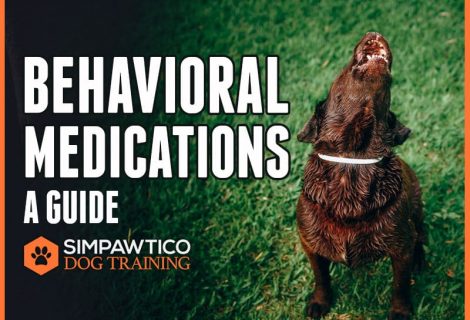Dog Training Techniques – Speed and Patience are EVERYTHING!
Speed is one of the most important dog training techniques and most folks just are not fast enough. Are you communicating well enough at the micro level? We’re gonna find out!
THE VERTICAL DIMENSION
Everybody’s heard the saying that dog’s live in the moment. But I don’t think people fully appreciate HOW fast that means you need to work. We’re talking seconds. Actually I want you to think in terms of microseconds because I want you to try to be as fast as you can.
Dogs live mainly in the vertical dimension of time. It’s very likely that their lives take on a greater intensity than ours because they’re not worried about yesterday or tomorrow: they are where they’re at as fully as possible. Which, honestly, is something we humans should be better at, too.
For us, that means that SPEED is vitally important in our feedback and training. I don’t mean how quickly we move, I mean how quickly we provide feedback on the things we like and don’t like, AND how quickly we switch between the two without unnecessary drag.
MICRO SPEED, MACRO PATIENCE
One of my favorite business coaches, Gary Vaynerchuck has said: “Micro speed, macro patience.” He goes onto explain that speed is for the short term, and patience is for the long term, and the pressure between those two is what creates the diamond. Now Gary Vee was talking about business in that statement, but it is an amazingly appropriate model in how we should be working with our dogs.
SPEED in the here and now is vitally important. Your feedback has to be fast, and it has to be binary. You’re probably already good at telling your dog when you don’t like something, but you have to be fast—maybe even faster—when you cut the other way. When you get what you want, or even just a bad behavior stops, you have to turn on a dime instantly and let them know!
PATIENCE for the long term is important too. Your fast feedback is what keeps moving things forward, but it takes time to make those bigger, long term changes.
You want your dog to stop jumping on guests? That doesn’t happen over night.
You want your dog to stop pulling on walks? That’s not a weekend project.
You need to be willing to hang out and keep hustling with your dog over days, weeks, months, and in some cases even years.
Good work with your dog is about consistent execution over time and that involves SPEED in the short term with your feedback, and PATIENCE in the long term with gradual improvement by giving that fast feedback continually over time.
Now that may sound kind of intricate, so here are some real world examples of what I’m talking about:
JUMPING
Internet advice for jumping discusses turning your back, ignoring your dog, and stepping away quickly. They advise saying “Off,” or even physically moving the paws off of you. These strategies aren’t necessarily wrong, but people get mixed results with them because it’s only half of the equation.
The instant your dog’s feet hit the ground you have to say something and you have to give them the attention they were seeking.
Speed in the short term with how you give feedback on what you like, and patience in the long term as they gravitate towards better manners.
I can’t even tell you how many times I’ve watched people do all the things: turning, saying Off, stepping back, moving the paws, even that ridiculous knee in the chest crap, and then their dog stops jumping and then they just ignore the dog.
So, you’re a lot more interesting and you give them a lot more attention when they’re being bad. You gotta flip that feedback loop completely over.
POTTY TRAINING
The importance of speed of feedback in potty training cannot be understated. When you have your dog outside, and they do their business, your praise needs to happen the millisecond they start doing it. It continues as they go, like a cheerleader, and there’s a party with lavish rewards at the end.
If you’re standing at the back door and treating them when they come in, they’ll think they’re being rewarded for coming in, not for going potty. You missed your window and now coming in is better than going potty outside. You need to be out there and reward immediately on-site for them to link it up properly.
THIS is also why you don’t reprimand a dog when you come across an accident in the house. If you didn’t see them do it, it’s too late to say anything about it. They have no idea why you’re so upset. Just clean it up, move on, and reprimand yourself for not paying attention.
PUPPY BITING
We put out a puppy biting video last year on how to work through this problem, and in that video we talked about giving good feedback when your puppy is using a softer mouth. The speed of feedback is pivotal here, too. Yes, we cry out when the puppy gets us, but we also immediately tell them what good puppies they are when they try again and do better with a softer mouth..
Patience in the long term is generally tested here and I get people commenting all of the time saying “I tried it and it didn’t work. Any tips?” Yeah: DO IT MORE!!
PULLING ON LEASH
Again, the internet is rife with ideas on how to solve this. The big one you see a lot is to stop when your dog is pulling, and then start again when they’re calm. As before, this is not wrong, but this advice doesn’t convey how FAST that procedure should be. And it doesn’t put proper emphasis on how ongoing praise for a loose leash is important.
That whole process of stop, wait, go again shouldn’t take more than 2 to 5 seconds. Most of you are standing around too long, taking too long to reward, and starting back into it too late.
FOOD HANDLING
If you’ve watched our Marker training video or are familiar with marker training, this allows you to establish precise communication with the speed of a lightning strike. If you haven’t, check out our video on it and I’ll link to it in the description below.
In that marker training video, we talked about how a marker acts as a bridging stimulus that extends the amount of time you have available to deliver a reward for the behavior you wanted. That said, you don’t have unlimited time. Most of you are fumbling around with your food rewards and taking too long to get ’em.
I have lots of students that come to class with their treats in tight jeans pockets or ziploc baggies, and then they fiddle-faddle around getting their food out. By the time they have the food, the dog’s already tuned out and is moving on to something else.
These folks then have to call their dog back into attention to give them the reward…but it’s too late. The reward won’t be linked to the thing you wanted, it’ll be linked to whatever they’re doing when you finally give them the food.
So, stop messing around. Mark that behavior the instant your dog does it. Then, use large pockets, or bait bags that you can reach into and access a food reward quickly and easily. Practice your food handling so you can grab, control, and deliver efficiently.
Take a look at our Power Tip #2 video for more info on how to do it.
EVERY DAY GENERAL BEHAVIOR
There are a zillion “teachable moments” throughout the day, just moving about the house with your dog. If you’re on the lookout, you can praise and give feedback on a hundred good things a day. Not everything requires a full on reward event like you do during practice. Sometimes all you have to say is “Good dog” and a little scratch behind the ear to tell them they did good (or even not bad). You add that up and you could give a hundred samples of information in a day on what good behavior looks like.
Think about it: how much good behavior are you just taking for granted? This is a prime example of speed and patience: fast feedback when you get something good that adds up over time to evergreen good behavior.
THE “STUBBORN DOG” MYTH
I’ve worked with hundreds of clients who come in with a problem and they’re looking for a solution that reads 1234 like a recipe. Honestly, in most cases the core problem is the lack of speed and consistency of feedback. Their dog does something bad, they bitch about it, then the dog does something good, and nobody says a word. That’s a ton of missed opportunity.
I have said a lot all over Simpawtico stuff that you change a dog’s behavior by focusing on what they do right, not what they do wrong. However, for that to work it has to be instantaneous, and it has to happen consistently over time.
On a side note, shifting your focus like this has the added benefit of changing your whole outlook on your dog. If you feel like you’ve got the most stubborn, or the dumbest dog on the block, changing what you’re looking for will greatly improve things for both of you.
Are you focusing too much on all the things they do wrong? I’ve seen a lot of “stubborn dogs” that really just had owners that were not communicating very well, and had little patience.
Honestly, a lot of relationships could probably benefit from a similar outlook!
HOMEWORK
So here’s your homework, guys. Challenge yourself to get faster with your good feedback. Look for things to praise and reward, and try to be as close to instantaneous as possible.
This requires you to be paying attention, to shift your focus. But you can do it, that’s why you’re here! Keep your eyes peeled so you can pinpoint the good stuff when it happens.
And look, sometimes the bar isn’t necessarily “good behavior.” Sometimes “not bad” is good enough. Like we talked about:
- Jumping stops? Say something!
- Puppy pees outside? Say something!
- Dog looks over their shoulder at you instead of barking at that dog across the street? SAY SOMETHING!!!
OK, let us know in the comments how your speed is improving, how your patience is improving, and what things you’ve noticed as you work, both with your dog, and yourself. Be sure to ask any questions you may have, and as always: keep learning, keep practicing, and we’ll see you next time.


